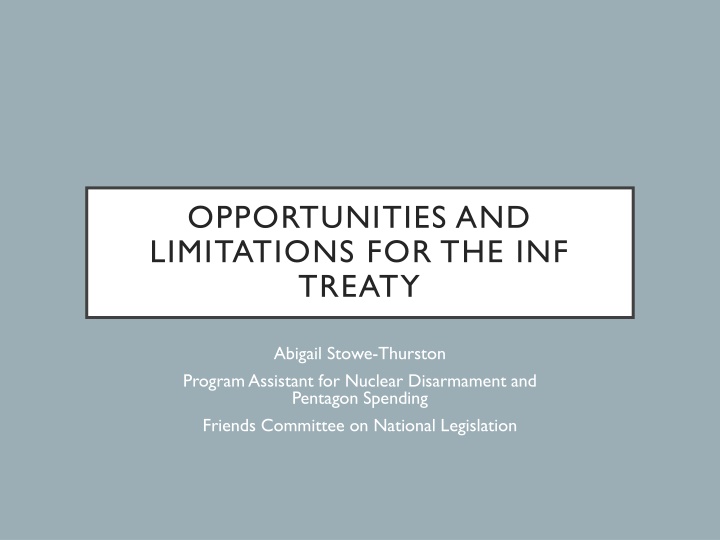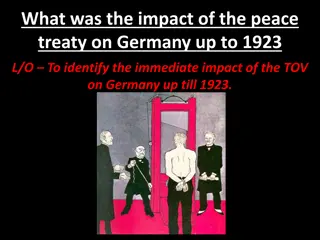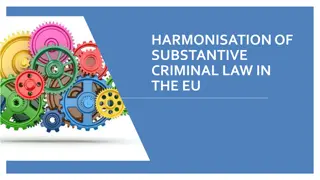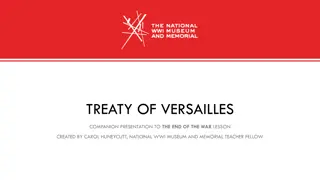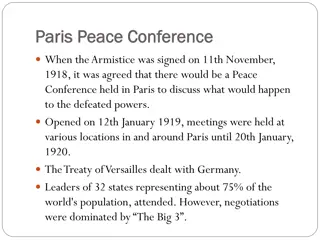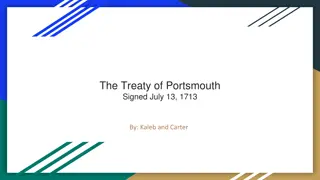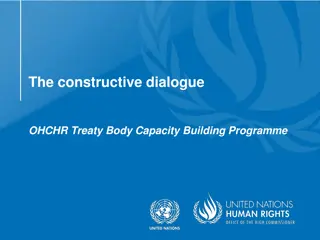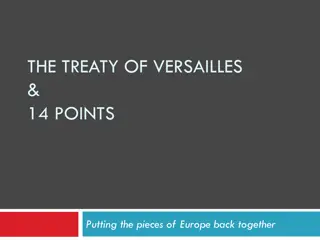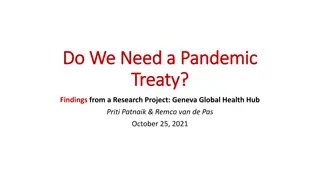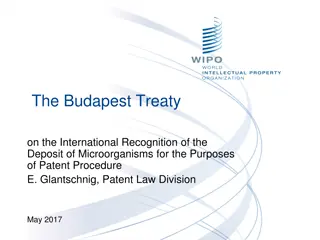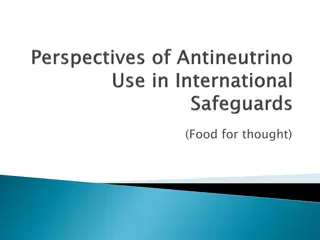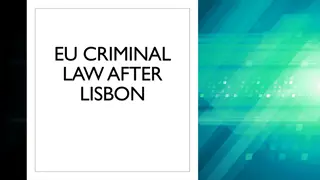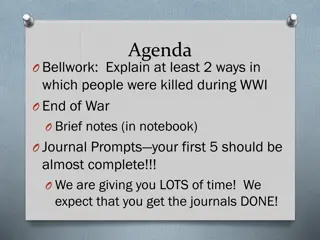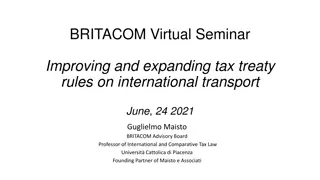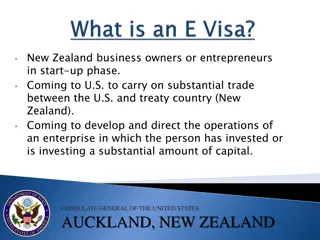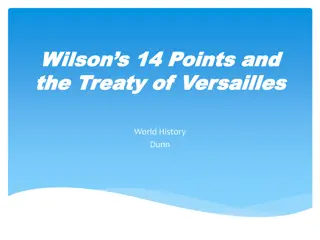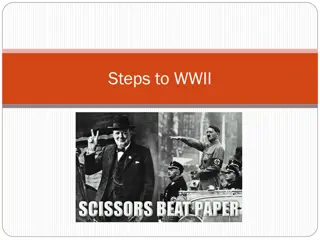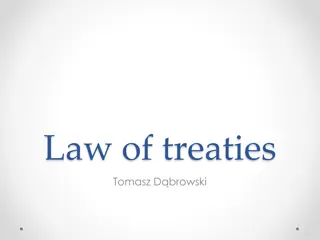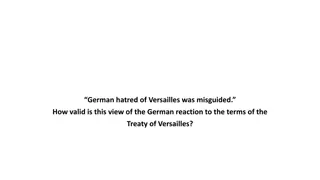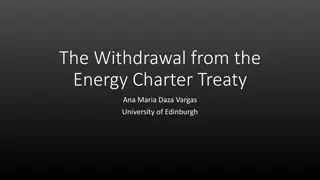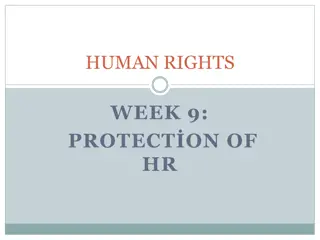Opportunities and Limitations for the INF Treaty Analysis
Abigail Stowe-Thurston discusses opportunities and limitations for the INF Treaty, including Russia's noncompliance, the Obama administration's response, the Cotton Amendment to the NDAA, the logic behind the dual-track decision, turning points in INF negotiation, and the political implications of a win for Russia.
Uploaded on Oct 02, 2024 | 2 Views
Download Presentation

Please find below an Image/Link to download the presentation.
The content on the website is provided AS IS for your information and personal use only. It may not be sold, licensed, or shared on other websites without obtaining consent from the author.If you encounter any issues during the download, it is possible that the publisher has removed the file from their server.
You are allowed to download the files provided on this website for personal or commercial use, subject to the condition that they are used lawfully. All files are the property of their respective owners.
The content on the website is provided AS IS for your information and personal use only. It may not be sold, licensed, or shared on other websites without obtaining consent from the author.
E N D
Presentation Transcript
OPPORTUNITIES AND LIMITATIONS FOR THE INF TREATY Abigail Stowe-Thurston Program Assistant for Nuclear Disarmament and Pentagon Spending Friends Committee on National Legislation
WHAT IS THE VALUE OF A TREATY IF ONE PARTY IS IN VIOLATION?
RUSSIAS NONCOMPLIANCE US first suspected noncompliance in 2008 Two violations RS-26 IRBM, Russia has tested to ranges below 5,500 km SSC-8 GLCM, NYT reported on deployment in Feb. 2017 SSC-8 Cruise Missile. Popular Mechanics. 2017
OBAMA ADMINISTRATIONS RESPONSE Muted, measured, and out of the public eye Accumulated information over time Managed through interactions with high level Russian officials Called meeting of the Special Verification Commission (2016)
COTTON AMENDMENT TO THE NDAA Establishes program of record for DOD to develop Ground Launched Cruise Missiles (GCLMs) Authorizes $65 million INF Treaty doesn t prohibit research and development, but testing would violate the treaty
THE LOGIC: DUAL TRACK DECISION 2.0 Develop new capabilities to pressure Russia into compliance Credits US Pershing deployments for encouraging Soviet leadership to negotiate INF Treaty
TURNING POINTS IN INF NEGOTIATION WERE DIPLOMATIC Negotiations stalled for years after 1979 Dual Track Decision 1986-Gorbachev agrees to unlink negotiations on French and British forces from INF negotiations Scaled reductions gradually remove INF from Europe, allow deployments in Asia in the meantime, ultimately agreed to double zero option NDAA provision lacks sustained diplomatic strategy
A WIN FOR RUSSIA IS POLITICAL Challenge NATO unity Raise the stakes for US to aid allies US GLCM could exacerbate tensions among NATO allies
TOUGH ON RUSSIA POLICY ONLY FANS FLAMES Russia exploits threats (real or perceived) for political gain US/Western policies that may be perceived as threatening to Russia will be used to further justify Russian behavior Therefore, unlikely to change Russian behavior Example: Russian adventurism as a response to NATO expansion
THE TREATY IS STILL RELEVANT If the treaty cannot be preserved, politically valuable from US perspective for Russia to be the spoiler US compliance is political leverage Diplomacy is a necessity, not a reward Impulse to do something risks engineering policy in a strategic void
POLICY RECOMMENDATIONS Ally-centric, treaty-compliant military response US is already equipped to manage threat posed by Russian INF systems Messaging campaign Discuss details of Russian INF violations with NATO allies and their publics Multi-lateralize the problem and raise political and diplomatic costs to Moscow Continue diplomatic engagement with Russia on this issue and broader arms control objectives
TAKEAWAYS Logic of the Cotton Amendment is based in flawed understanding of INF Treaty negotiation A win for Russia will be political rather than strategic An effective US response to violation will be political rather than military The value of a treaty extends beyond its normative functions
